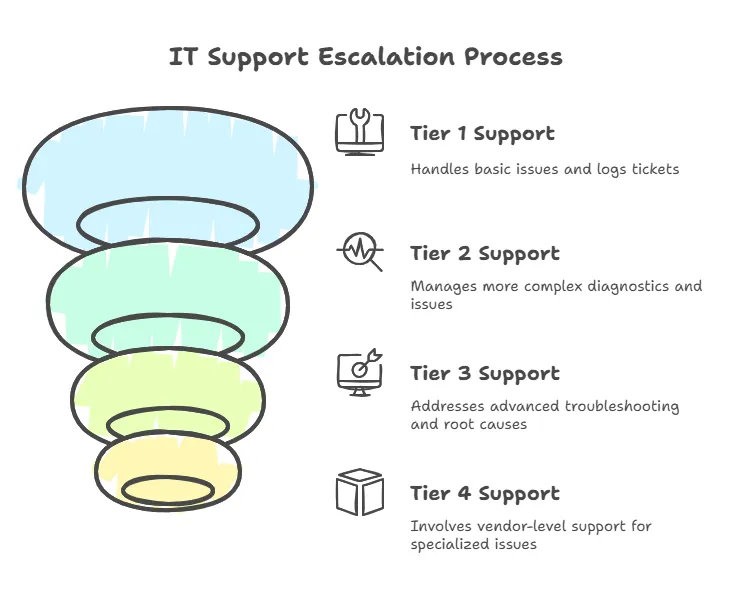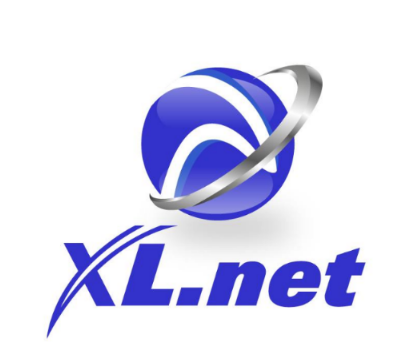Tiers of IT Support Explained by a Trusted Naperville IT Support Provider
Naperville, United States - May 19, 2025 / XL.net - Managed IT Services Company Naperville /
IT Support Provider in Naperville Explains the Different Tiers of IT Support
According to CloudSecureTech, the IT support market is expected to grow by 11.2% annually from 2022 to 2030. That explosive growth signals just how crucial structured support is for modern organizations.
Adam Radulovic, CEO of XL.net, says, “Tiered IT support isn’t just a hierarchy—it’s a strategy that keeps your business agile and secure.”
If you’ve experienced crippling downtime due to unresolved tech issues, you know the stakes are high. In this article, the leading Naperville IT support provider will share a roadmap to understanding each IT support tier, why they matter, and how to align your business for seamless IT performance.
Tiered IT Support 101
Before diving into specifics, let’s clarify the essence of an IT tiered support model. Tiers of IT support create a structured, step-by-step escalation path. Each layer boasts unique expertise and responsibilities, ensuring your issues are tackled by the right resource at the right time.
Here’s how it typically works:
- Tier 1: Initial contact for routine or easily solved problems.
- Tier 2: More specialized troubleshooting, bridging deeper technical knowledge.
- Tier 3: Advanced experts dealing with complex, high-level issues.
- Tier 4: Vendor or manufacturer support for proprietary systems.
This systematic approach isn’t just about bureaucracy—it’s about maximizing efficiency and minimizing downtime.
Tier 1: Your Frontline Problem-Solvers
Tier 1 technicians are the first line of defense. They handle basic issues like password resets, software installations, or minor network glitches. Think of them as the quick-response team, armed with knowledge bases and checklists to solve common problems on the spot.
- Scope: Simple troubleshooting, ticket logging, basic software/hardware tasks.
- Value: Immediate support reduces bottlenecks and fosters user confidence.
- Pro Tip: Provide Tier 1 with a robust knowledge management system such as ITIL-based workflows so they can solve frequent issues fast.
Underestimating Tier 1’s role often leads to minor problems escalating unnecessarily—train them well, and you’ll cut down on your higher-tier workload dramatically.
Tier 2: Specialized Troubleshooting, Rapid Fixes
Once an issue goes beyond Tier 1’s scope, Tier 2 steps in. Technicians here boast in-depth knowledge of your systems and can dive into logs, error codes, or special configurations.
- Responsibilities: Intermediate system diagnostics, software conflicts, more complex network or security issues.
- Collaboration: Tier 2 may work closely with Tier 1, ensuring no repeated steps or duplicated efforts.
Skipping or skimping on Tier 2 can backfire when Tier 1 is overwhelmed. You risk slower resolutions, higher operational costs, and frustrated users.
Tier 3: Deep Expertise for Complex Challenges
Tier 3 is where seasoned experts live—system architects, senior network engineers, or cybersecurity specialists. They tackle the root causes behind recurring or intricate problems, often designing long-term solutions to prevent future breakdowns.
- Scope: Advanced troubleshooting, architectural reviews, major system overhauls.
- Collaboration: Tier 3 may provide training or documentation to Tiers 1 and 2, ensuring knowledge trickles down.
- Efficiency Tip: Implementing a robust escalation protocol helps Tier 3 focus on critical tasks rather than repeated basic fixes.
- Read More: Learn about sophisticated network architectures in this Cisco resource center.
While Tier 3 resources are more expensive, ignoring their input can result in recurring issues—endlessly patching symptoms instead of curing the disease.
Tier 4: Vendor-Level and Enterprise Support
Some problems require specialized knowledge only available from the original vendor or manufacturer. Tier 4 specialists are often OEM contacts or dedicated vendor support lines (think Microsoft Premier Support, Cisco TAC, etc.).
- Scope: Proprietary hardware/software issues, firmware-level bugs, warranty claims.
- When It Matters: You escalate to Tier 4 if internal teams can’t resolve system-level complications or product-specific defects.
While Tier 4 resolutions may feel slower due to corporate policies or external processes, building a strong relationship with key vendors ensures faster escalations and better outcomes.

The Difference Between IT Support Tiers & The Real Impact on Your SMB
Ultimately, It’s all about matching the right level of expertise to the right problem—fast. When you have well-defined IT technical support tiers, you shorten downtime, reduce confusion, and optimize costs. Tier 1 resolves straightforward glitches, Tier 2 tackles intermediate headaches, Tier 3 solves advanced puzzles, and Tier 4 steps in for vendor-specific interventions.
Small and mid-sized businesses often lump everything into a single “IT guy” approach and wonder why everything slows down. The moment you align issues to the proper tier, you see better results and fewer headaches.
Common Pitfalls When Implementing a Tiered Model
Even a robust tiered structure can falter under these mistakes:
- Overlapping Responsibilities: When tiers aren’t clearly defined, tasks bounce around with no clear owner.
- Poor Escalation Protocols: If Tier 1 doesn’t know when (or how) to escalate, issues get stuck.
- Weak Training: Inadequate Tier 1 onboarding leads to repeated escalations for trivial fixes.
- Ignoring Employee Feedback: Sometimes, your end-users can identify patterns that help refine support processes.
Check out this Zendesk article for a more in-depth look at building effective escalation pathways.
Actionable Strategies to Maximize Each Tier’s Value
- Invest in Tier 1 Training: Provide up-to-date tutorials and knowledge bases. This front line can handle more if they’re properly prepared.
- Standardize Escalation: Define a clear handoff process so no one wonders, “Who’s in charge now?”
- Monitor Performance Metrics: Measure resolution times at each tier to spot inefficiencies.
- Encourage Continuous Feedback: Each closed ticket is an opportunity to learn and refine.
- Stay Proactive: Proactive monitoring tools (like SolarWinds or PRTG) help identify issues before they escalate to higher tiers.
Sometimes, Tier 1 can resolve up to 70% of all support tickets if given the right tools and knowledge. That means less burden on higher tiers and faster overall resolution.
Quick Comparison Table
| Tier | Typical Expertise | Responsibility | Average Response Time | Cost Implication |
| Tier 1 | Basic troubleshooting | Password resets, minor software fixes | Fast (minutes to 1 hour) | Lowest (entry-level tech) |
| Tier 2 | Intermediate specialists | Complex software/network issues | Moderate (1–2 hours) | Moderate (skilled technicians) |
| Tier 3 | Senior-level engineers | Root-cause analysis, big-picture fixes | Slower (hours to a day) | Higher (expert staff) |
| Tier 4 | Vendor/OEM support | Proprietary systems, deep firmware | Variable (days) | Potentially high (external) |
Ready to Transform? Partner with a Trusted Naperville IT Support Company
A clear tiered support structure can mean the difference between crippling downtime and seamless operations. From Tier 1 frontline fixes to Tier 4 vendor-level expertise, each layer plays a vital role in safeguarding productivity and growth. Having the right people handle the right problems at the right time ensures your organization remains agile, secure, and efficient. At XL.net, we specialize in creating tailored tiered support models for small and mid-sized businesses.
Don’t let tech troubles derail your business goals. Partner with XL.net for expert tiered IT support, custom solutions, and peace of mind. Let’s build a resilient IT foundation that grows with you—starting now.
Contact our IT support in Naperville today to schedule a consultation and see how we can help XLerate Your Business with expert IT services.

Contact Information:
XL.net - Managed IT Services Company Naperville
50 S Main St Suite 200 - #261
Naperville, IL 60540
United States
Sales XL
(844) 915-5155
https://xl.net/
Original Source: https://xl.net/blog/what-is-the-difference-between-it-support-tiers/


